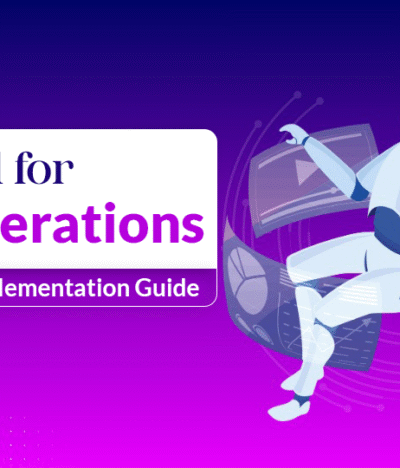In today’s digital age, customer experience has become a key differentiator for businesses across all industries, especially in banking and insurance. As customers demand faster, more personalized service, financial institutions are turning to Artificial Intelligence (AI) to meet these expectations. AI is not just a buzzword; it’s a powerful tool that is transforming the way banks and insurance companies interact with their customers, making every interaction more efficient, personalized, and satisfying.
The Shift Towards AI-Powered Customer Service
Traditional customer service models often rely heavily on human agents to handle inquiries, which can lead to long wait times and inconsistent service. However, with the integration of AI, banks and insurance companies can now offer instant, round-the-clock support through intelligent chatbots and virtual assistants. These AI-driven tools are capable of understanding and responding to customer queries in real-time, providing accurate information, and resolving issues without the need for human intervention.
For instance, AI-powered chatbots can handle a wide range of tasks, from answering frequently asked questions to processing claims and providing policy information. This not only reduces the workload on human agents but also ensures that customers receive prompt and accurate assistance, leading to higher satisfaction rates.
Improving Patient Experience for Medical Insurance Providers with Generative AI
Medical insurance providers are leveraging Generative AI (GenAI) to enhance patient experiences by streamlining processes and providing personalized care. GenAI can generate dynamic and contextually relevant responses to patient inquiries, ensuring accurate information and faster resolution of queries. For example, if a patient needs to understand their coverage for a specific medical procedure, an AI-driven assistant can provide detailed explanations based on the patient’s policy, previous interactions, and even their medical history.
Moreover, GenAI can automate the pre-authorization process by cross-referencing patient information with policy data, reducing delays in treatment approvals. This not only improves patient satisfaction by minimizing administrative hurdles but also allows healthcare providers to focus more on patient care rather than paperwork.
Reducing Fraud in Financial Services Customer Touch Points
Fraud prevention is a critical concern for both banks and insurance companies. AI is playing a vital role in detecting and preventing fraud at various customer touch points. By analyzing patterns in transactions, claims, and customer behavior, AI can identify anomalies that may indicate fraudulent activity. For example, if an insurance claim is filed from a different geographic location than the policyholder’s usual location, or if there is a sudden spike in large transactions, AI can flag these activities for further investigation.
AI-driven solutions use machine learning algorithms to continuously learn from new data, improving their ability to detect sophisticated fraud schemes. Additionally, AI can cross-check information from multiple sources in real time to validate the authenticity of a transaction or a claim, reducing the risk of fraud and protecting both the financial institution and its customers.
Improving Banking Front Office Capabilities with Agent Assist
AI is enhancing banking front office capabilities by acting as an intelligent “agent assist.” This AI-driven tool supports human agents during customer interactions by providing real-time information, suggestions, and context-relevant responses. For instance, when a customer calls a bank’s support line to inquire about a loan product, the AI agent assist tool can instantly pull up the customer’s account information, past interactions, and eligibility criteria for the loan. This allows the agent to provide accurate and personalized information without delay.
Moreover, agent assist tools can help front-line banking staff upsell or cross-sell products by identifying potential opportunities based on customer profiles and previous behaviors. For example, if a customer frequently travels, the AI tool might suggest a travel credit card that aligns with the customer’s spending habits. This not only improves the efficiency of customer service but also enhances sales opportunities for banks.
Personalized Customer Interactions
One of the most significant benefits of AI in banking and insurance is its ability to deliver personalized experiences. AI algorithms can analyze vast amounts of customer data, including transaction history, behavior patterns, and preferences, to tailor interactions to each individual. Whether it’s recommending a new insurance policy based on a customer’s life stage or offering personalized financial advice, AI makes it possible to cater to the unique needs of each customer.
This level of personalization was previously unattainable with traditional methods. AI-driven personalization not only enhances the customer experience but also helps build stronger relationships between financial institutions and their clients, leading to increased loyalty and retention.
Multilingual and Omnichannel Support
In today’s globalized world, customers expect to interact with financial institutions in their preferred language and through their preferred channels. AI-powered solutions are breaking down language barriers by offering multilingual support across various platforms, including email, chat, and voice. This capability is especially crucial for banks and insurance companies that operate in diverse markets.
Moreover, AI ensures seamless communication across multiple channels, providing a consistent experience whether the customer is interacting via chat, email, or phone. For example, an AI-driven chatbot can handle a customer’s initial inquiry through chat, and if the issue requires further assistance, it can seamlessly transfer the conversation to a human agent with all relevant context intact.
Efficiency and Cost Savings
Implementing AI in customer service not only enhances the customer experience but also leads to significant cost savings for financial institutions. By automating repetitive and time-consuming tasks, AI reduces the need for large customer service teams, resulting in lower operational costs. Additionally, AI’s ability to handle high volumes of inquiries without compromising on service quality allows banks and insurance companies to scale their customer support operations efficiently.
AI-driven automation also improves accuracy and reduces the risk of human error. For example, AI can automate the process of checking insurance policy details or customer information, ensuring that the data used is accurate and up-to-date. This reduces the likelihood of mistakes that could lead to customer dissatisfaction or compliance issues.
Conclusion
The integration of AI into banking and insurance is revolutionizing customer service, making it more efficient, personalized, and accessible. By leveraging AI, financial institutions can not only meet but exceed customer expectations, providing a level of service that is faster, more accurate, and more personalized than ever before. As AI technology continues to evolve, its role in transforming customer experience will only grow, setting new standards for the industry.
Financial institutions that embrace AI-driven customer service solutions will not only improve their operational efficiency and reduce costs but also build stronger, more loyal relationships with their customers, ensuring long-term success in an increasingly competitive market.




